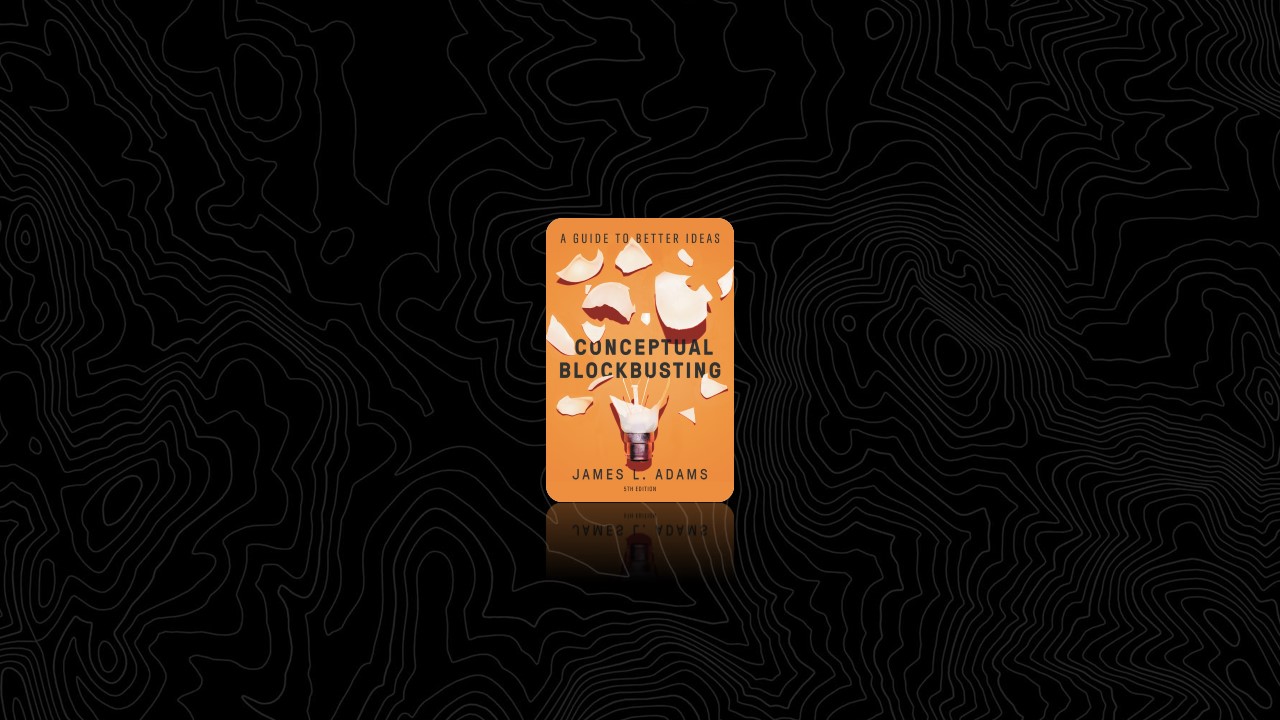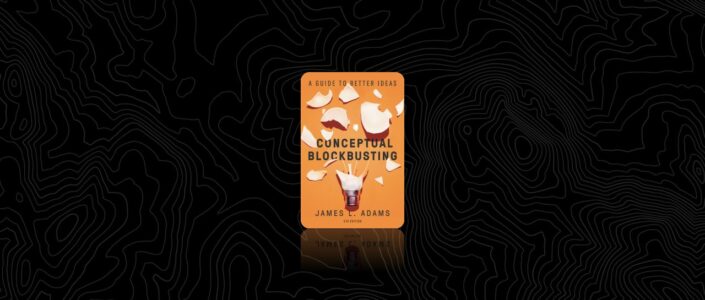One way to increase individual creativity is to first make the brain more aware of the advantages of doing so, and to equip it with techniques that work for you.
The process of consciously identifying conceptual blocks takes one quite a distance toward overpowering them. Still, there are specific methods of going further. Many of these blocks exist because of our achievement-oriented, competitive, and compulsive nature. However, this very combination of characteristics outfits us optimally for consciously overpowering such blocks.
Students who are interested solely in good grades are often not as creative in school as they could be. However, if they are put in a course that is graded on creative output, they become much more creative. Their motivation and mental discipline are sufficient that they quickly figure out ways to become more creative and act accordingly. Let us talk about a few such methods that can be consciously applied to problem-solving.
A QUESTIONING ATTITUDE
One of the most important capabilities in a creative person is a questioning attitude. Everyone has a questioning attitude as a small child, because of the need to assimilate an incredible amount of information in a few years. The knowledge that you acquire between the ages of zero and five, for instance, enormously exceeds what has been consciously taught. A great amount of knowledge is gained through observation and questioning.
This questioning attitude can be achieved by conscious effort. You merely need to start questioning. An emotional block is involved here, since you are apparently laying your ignorance out in the open. However, it is a block that will rapidly disappear once you discover the low degree of omniscience present in the human race. No one has all of the answers, and the questioner, instead of appearing stupid, will often show his insight and reveal others to be not as bright as they thought. The most learned man can be overrun merely by continually applying the questions “why” and “how.”
WORKING ON THE RIGHT PROBLEM
We are all familiar with our tendency to work on problems that we know how to solve or that are the most apparent, rather than the core problems on which we should be concentrating.
“If the only tool you have is a hammer, you tend to treat everything like a nail.” I would like to offer some alternate versions: “If you are good with a hammer, you prefer nails.” Or, “If you see the nail most clearly, you grab your hammer.” The skilled physician knows to look for the cause of the symptoms, rather than merely trying to get rid of the symptoms. The skilled problem solver knows to look for that core problem that causes all of the other, lesser problems.
If the only tool you have is a hammer, you tend to treat everything like a nail.” I would like to offer some alternate versions: “If you are good with a hammer, you prefer.
USING OTHER PEOPLE’S IDEAS
One good way to break a set is to interact with other people who think differently than you—an easy assignment, since everyone does. This is an especially powerful way of increasing creativity, since we have been brought up glorifying the independent individual creator and are conflicted about getting help with our problems.
cognitive diversity is a benefit to creativity. A good test is to ask for ideas from a large number of people, including some who are not your friends. You will be surprised at the variety of responses you get, some of which you will find fascinating because they are so far from solutions you had considered.
This is not a suggestion that you break the law and end up in jail for patent infringement or kicked out of school for plagiarism. But you certainly can make more use of the cognitive styles and specialties around you.
CROSSING DISCIPLINES
As knowledge and intellectual approaches have increased, we have subdivided them into disciplines. We first meet them in school, where we encounter spelling, arithmetic, and music, then English, algebra, languages, and social studies. If we go to college, we find that anthropology, sociology, and psychology are different, and if we stay there long enough we find that cognitive psychology is a very different animal than behavioral.
Disciplines are accompanied by jargon, methodology, journals, and societies. Their benefit is that they promote depth of understanding, control the quality of work in their purview (sometimes, unfortunately, according to traditional standards), and provide satisfying tribal affiliation for their members. However, more creativity is now taking place between disciplines.
Discomfort in dealing with diverse disciplines, or at least with people who are experts in these disciplines, is a major block to creativity and often based on long-obsolete experiences: bad teachers, dull books, and old approaches.
CROSSING CULTURES AND CHANGING ENVIRONMENTS
Creativity demands both depth and breadth. Travel, living abroad, and mixing with people from different parts of society are broadening experiences. Trying to understand what computer experts are saying if you are not a computer expert is both challenging and educational. If you are an elderly rich white male, attempting to understand the world as seen by a young poor black female can be a great help in increasing creativity. If you are a business person, attempting to understand people who are highly critical of business may help you increase your sales.
Companies will ship their people long distances to beautiful places and then schedule them inside a conference room full of communication equipment. They could just as well stay home. If you are trying to encourage people to bond, you need a common stressful experience, not a conference room. The Marine Corps knows that. If you are an automobile supply company trying to get your engineers to think like Google, maybe you should try to convince Google to host your meeting at one of their locations—and let some of their engineers attend so that they can learn more about the automobile market. Also, if you want people to think creatively, the retreat should not be scheduled down to the minute. Environmental change must be tailored to the desired goal and level of creativity.
RELAXING JUDGMENT
Judgment is clearly necessary in life, but it is often automatic. It’s not hard to see why: life becomes simpler if one makes rapid judgments, and a person is rewarded if those judgments are later seen to be right. But premature judgment can be the enemy of creativity. You are undoubtedly familiar with that by the common phenomenon of a better idea that emerges just as soon as you commit to another one.
The ego and superego suppress ideas by judging them to be somehow out of order as they try to work their way up to the conscious level. If this judging can be put aside for a while, many more ideas will live until they can be seen by the conscious mind.
Raising Creative Children and Creativity in the Future
It is important to realize that not only are we all creative, but most of us are more creative than we think.
The key challenge for most of us is to allow our brain to become more creative by making better use of our consciousness. Then we can ask more of our brain and get increasing pleasure from the result. For many of us, we can find an additional challenge in sharing this creativity with others, by raising children who are creative and will turn into creative adults.
In the case of creativity, the role of inheritance is under debate, especially among cognitive scientists, biologists, and others who study them—most of whom probably lean toward inheritance—and parents, who like to think that their children can be defined by their upbringing, as long as they turn out okay. A book defending the idea that our brain must have a good amount of hardwiring at birth to survive and rapidly learn difficult things such as a language is The Blank Slate: The Modern Denial of Human Nature, by Steven Pinker. It is safe to say that our behavior is a result of both inheritance and our upbringing, and to the extent that there are creativity genes, you have them.
Environment affects people’s creativity in all sorts of ways. At the time of this writing, new Silicon Valley buildings are exploring designs that will informally cause employees doing creative work to interact, in order to increase the flow of ideas. But it is difficult to design an environment that enhances the creativity of a large number of people because of intellectual diversity. Some want quiet, some music. Some want an open office, some closed. Some want bright light, some dim. Some want to be messy, some are highly organized, Some want an office partner, some do not. This plagues architects of large commercial spaces. All I can say here is that people should be given as much choice as possible to individually design their environment—and the problem is much more easily solved in a home.


